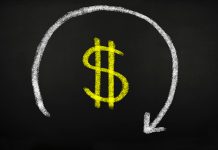The U.S. economy surged ahead 6.9% (annualized) in the fourth quarter, slightly above consensus expectations. Overall, the economy rebounded 5.7% in 2021, more than recouping 2020’s 3.4% contraction.
Inventory rebuilding accounted for 71% of growth, contributing an impressive 4.9 percentage points to the headline tally. The increase was led by retail and wholesale trade industries, with retail inventories of motor vehicle dealers leading the way.
Consumer spending grew at a solid 3.3% annualized, up from a 2% pace in Q3. Spending on durable goods gained ground, rising 1.6% in Q4,after a sizeable 25% giveback in Q3. Services grew at a healthy 4.7%, lead by health care, recreation and transportation. Spending growth on areas sensitive to rising Covid-19 cases slowed, but we will see more details on the monthly pattern when that data is released tomorrow.
Business investment rose 2.0% annualized, weighed down by an 11.4% drop in nonresidential structures. Spending on equipment was up modestly (0.8%), while outlays on intellectual property products did the heavy lifting, up 10.6% in Q4. Investment has been shifting from tangible to intangible for some time, with investment in structures falling in eight of the last nine quarters.
Residential investment was down slightly in the fourth quarter (-0.8%). Like spending on consumer durables and business equipment, residential investment grew at an unsustainable pace earlier in the pandemic and is 13% higher than pre-pandemic levels.
Government spending fell back 2.9% driven by lower spending at both the federal and state and local levels.
Exports rebound sharply in Q4 (+24.5%) from a decline in Q3. Imports were also up strongly (+17.7%). On net, trade neither added to nor subtracted from growth. Export gains were widespread, with the gain in services exports led by travel. The increase in imports was led by goods (non-food and non-automotive consumer goods, as well as capital goods).
No surprise, price pressures were up strongly in Q4. The core PCE deflator rose 4.3% on an annualized quarter-over-quarter basis (versus 4.3% in Q2).
Key Implications
The impressive headline growth tally was boosted by inventory restocking, which while necessary, is not likely to be repeated to the same pace next quarter. Growth in final domestic demand was a more modest 1.9%. Overall growth in 2021 was impressive, but that masked a year that had two very different halves. The first half of the year was dominated by post-vaccine re-opening and fiscal stimulus, where two rounds of direct payments to Americans and newfound confidence with vaccination boosted domestic demand to ~9% annualized pace. In the second half of the year, domestic demand slowed to 1.6% as capacity constraints increasingly dampened activity.
The surge in infections due to the Omicron variant played a role in the softening in consumer spending towards the end of Q4. We await the details on that in tomorrow’s monthly PCE data, which will set the stage for what kind of momentum the economy had heading into 2022. The first quarter of the year is likely to see some consumer weakness due to Omicron, but demand is likely to pick up through the quarter.
Abstracting from the inventory swings, final domestic demand is likely to be stronger in the first half of 2022 than it was in the latter half of 2021, underscoring an economy that no longer requires emergency levels of monetary stimulus.











